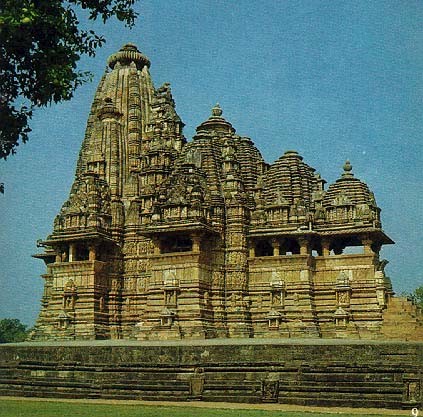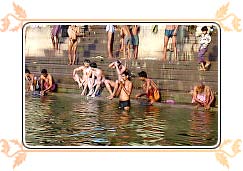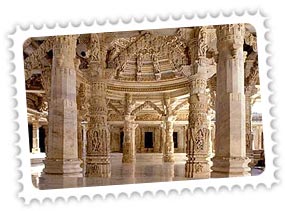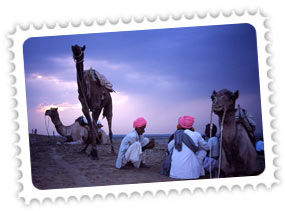 Introduction: Almost all Indian art has been religious, and almost all forms of artistic tradition have been deeply conservative. The Hindu temple developed over two thousand years and its architectural evolution took place within the boundaries of strict models derived solely from religious considerations. Therefore the architect was obliged to keep to the ancient basic proportions and rigid forms which remained unaltered over many centuries.
Introduction: Almost all Indian art has been religious, and almost all forms of artistic tradition have been deeply conservative. The Hindu temple developed over two thousand years and its architectural evolution took place within the boundaries of strict models derived solely from religious considerations. Therefore the architect was obliged to keep to the ancient basic proportions and rigid forms which remained unaltered over many centuries. Even particular architectural elements and decorative details which had originated long before in early timber and thatch buildings persisted for centuries in one form or another throughout the era of stone construction even though the original purpose and context was lost. The horseshoe shaped window is a good example. Its origins lie in the caitya arch doorway first seen in the third century B.C. at the Lomas Rishi cave in the Barbar Hills. Later it was transformed into a dormer window known as a gavaksha; and eventually it became an element in a purely decorative pattern of interlaced forms seen time and time again on the towers of medieval temples. So, in its essence, Indian architecture is extremely conservative. Likewise, the simplicity of building techniques like post and beam and corbelled vaulting were preferred not necessarily because of lack of knowledge or skill, but because of religious necessity and tradition.
On the other hand, the architect and sculptor were allowed a great deal of freedom in the embellishment and decoration of the prescribed underlying principles and formulae. The result was an overwhelming wealth of architectural elements, sculptural forms and decorative exuberance that is so characteristic of Indian temple architecture and which has few parallels in the artistic expression of the entire world.
It is not surprising that the broad geographical, climatic, cultural, racial, historical and linguistic differences between the northern plains and the southern peninsula of India resulted, from early on, in distinct architectural styles. The Shastras, the ancient texts on architecture, classify temples into three different orders; the Nagara or ‘northern’ style, the Dravida or ‘southern ‘ style, and the Vesara or hybrid style which is seen in the Deccan between the other two. There are also dinsinct styles in peripheral areas such as Bengal, Kerala and the Himalayan valleys. But by far the most numerous buildings are in either the Nagara or the Dravida styles and the earliest surviving structural temples can already be seen as falling into the broad classifications of either one or the other.
In the early years the most obvious difference between the two styles is the shape of their superstructures.

 Location: Mount Abu, Rajasthan
Location: Mount Abu, Rajasthan Location: Ajmer, Rajasthan
Location: Ajmer, Rajasthan
 The main gopuram
The main gopuram




 This temple is right behind the bhaktavatsalar temple. The temple is on the banks of a huge lake. Lord rama looks splendid with laxmanan, sita and hanuman.
This temple is right behind the bhaktavatsalar temple. The temple is on the banks of a huge lake. Lord rama looks splendid with laxmanan, sita and hanuman. This temple is in front of the main entrance of bhaktavatsalar temple.
This temple is in front of the main entrance of bhaktavatsalar temple.





 The Meenakshi temple has majestic stonewalls and towers rising out of the swarming streets of the city center. The image of Goddess Meenakshi is said to be carved out of a single emerald. This exotic temple was renovated by various kings, adding coiled corridors and larger-than-life sculptures. According to the legend of this temple the marriage of the goddess Meenakshi to Shiva actually took place in Madurai and is still celebrated every summer with great enthusiasm and gaiety.
The Meenakshi temple has majestic stonewalls and towers rising out of the swarming streets of the city center. The image of Goddess Meenakshi is said to be carved out of a single emerald. This exotic temple was renovated by various kings, adding coiled corridors and larger-than-life sculptures. According to the legend of this temple the marriage of the goddess Meenakshi to Shiva actually took place in Madurai and is still celebrated every summer with great enthusiasm and gaiety. The Oonjal (swing) Mandapam and Killikoontu (parrot cage) Mandapam are situated on the western side of the tank. The golden idols of Meenakshi and Sundareswarar are seated on the swing in the Oonjal Madapam every Friday and hymns are sung as the deities swing to and fro. There many parrots in the Kilikoontu Mandapam who have been trained to repeat Goddess Meenakshi's name. The 28 pillars of the Mandapam are the most interesting parts, exhibiting some excellent Sculptures of figures from Hindu mythology.
The Oonjal (swing) Mandapam and Killikoontu (parrot cage) Mandapam are situated on the western side of the tank. The golden idols of Meenakshi and Sundareswarar are seated on the swing in the Oonjal Madapam every Friday and hymns are sung as the deities swing to and fro. There many parrots in the Kilikoontu Mandapam who have been trained to repeat Goddess Meenakshi's name. The 28 pillars of the Mandapam are the most interesting parts, exhibiting some excellent Sculptures of figures from Hindu mythology.






